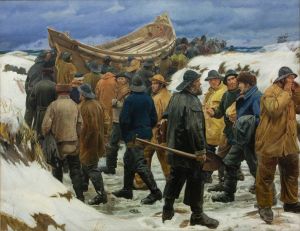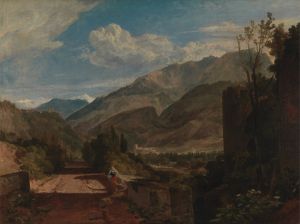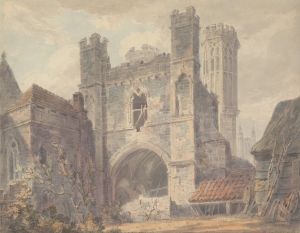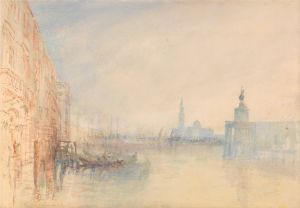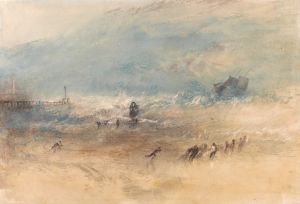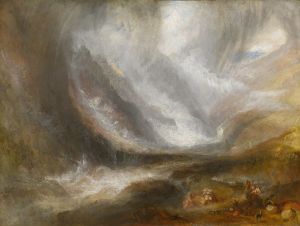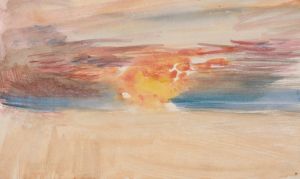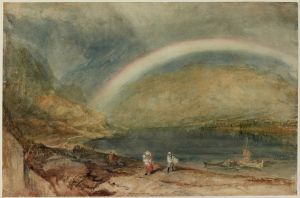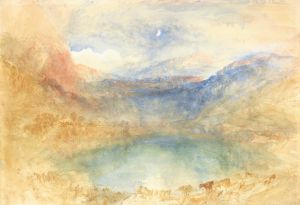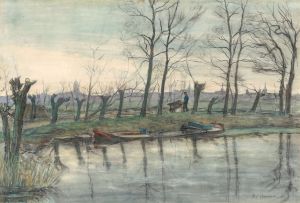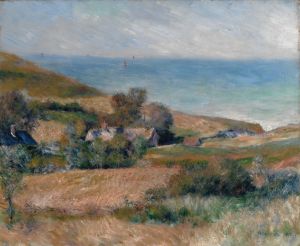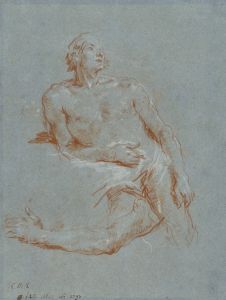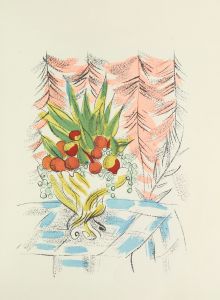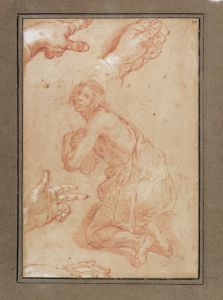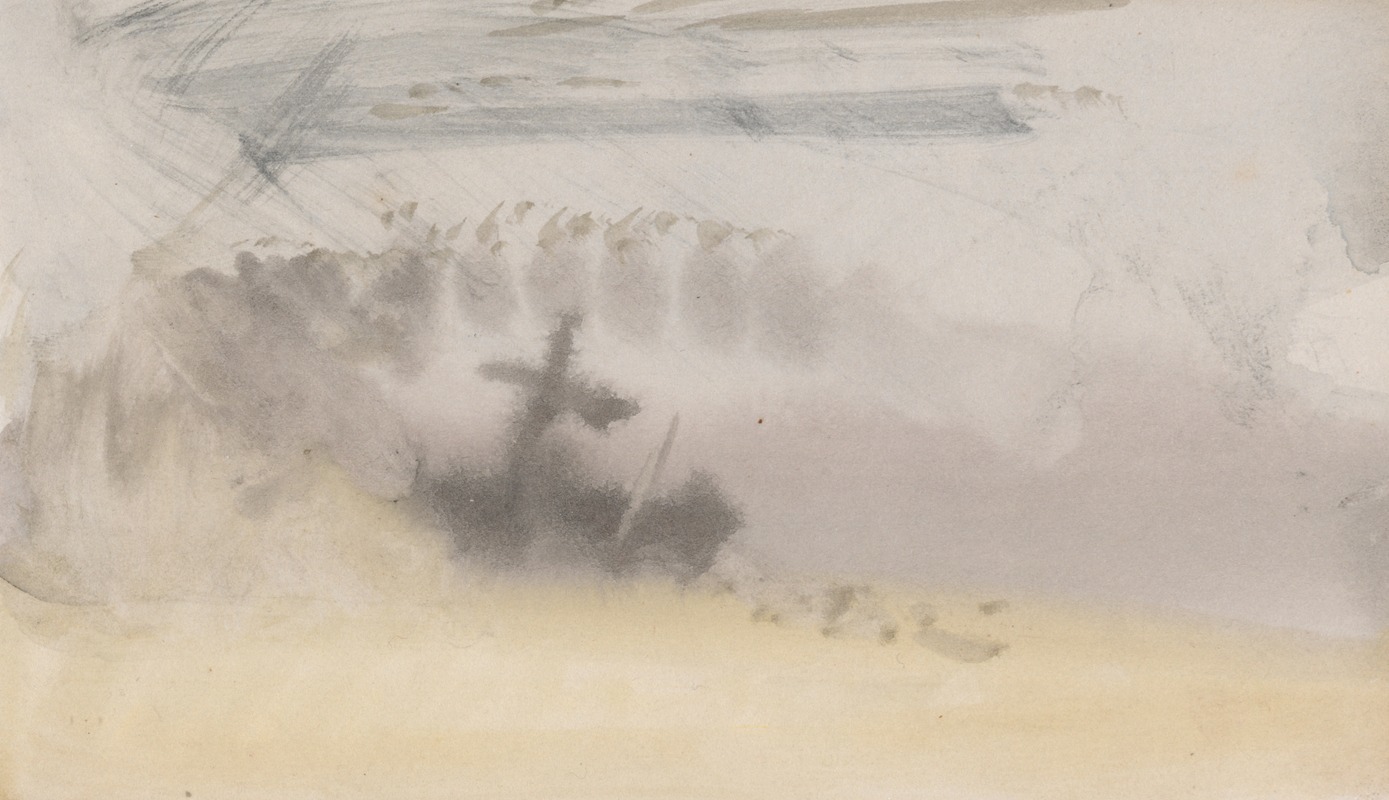
The Channel Sketchbook 49
A hand-painted replica of Joseph Mallord William Turner’s masterpiece The Channel Sketchbook 49, meticulously crafted by professional artists to capture the true essence of the original. Each piece is created with museum-quality canvas and rare mineral pigments, carefully painted by experienced artists with delicate brushstrokes and rich, layered colors to perfectly recreate the texture of the original artwork. Unlike machine-printed reproductions, this hand-painted version brings the painting to life, infused with the artist’s emotions and skill in every stroke. Whether for personal collection or home decoration, it instantly elevates the artistic atmosphere of any space.
Joseph Mallord William Turner, often referred to simply as J.M.W. Turner, was a renowned British artist known for his expressive and atmospheric landscape and marine paintings. Among his extensive body of work, "The Channel Sketchbook 49" is one of the many sketchbooks he used throughout his career to capture scenes and ideas that would later inform his larger works.
Turner was born in 1775 in Covent Garden, London, and showed an early talent for drawing. He entered the Royal Academy of Arts at the age of 14, where he quickly gained recognition for his skills. Throughout his life, Turner was known for his innovative use of light, color, and atmospheric effects, which would later influence the Impressionist movement.
"The Channel Sketchbook" is one of the numerous sketchbooks Turner filled during his travels. These sketchbooks were essential tools for Turner, allowing him to record observations and impressions of the landscapes and seascapes he encountered. They often contained quick sketches, studies of light and color, and notes that Turner would later reference when creating his finished paintings.
While specific details about "The Channel Sketchbook 49" are limited, it is known that Turner frequently traveled along the English Channel, capturing the dynamic and often tumultuous nature of the sea. His fascination with the sea is evident in many of his works, where he explored the interplay between water, sky, and light. The sketchbook likely contains studies related to these themes, reflecting Turner's ongoing interest in maritime subjects.
Turner's sketchbooks, including "The Channel Sketchbook," are valued not only for their artistic content but also for the insight they provide into his creative process. They reveal how Turner observed the world around him and how he translated those observations into his art. The sketchbooks are housed in various collections, with many held by institutions such as the Tate in London, which has a significant collection of Turner's works and papers.
Turner's legacy as an artist is profound. He pushed the boundaries of traditional landscape painting, emphasizing mood and atmosphere over precise detail. His work laid the groundwork for later developments in art, particularly the Impressionist movement, which similarly focused on capturing the effects of light and color.
In summary, "The Channel Sketchbook 49" is a part of Turner's extensive collection of sketchbooks that played a crucial role in his artistic development. While specific details about this particular sketchbook may not be widely documented, it represents a piece of Turner's broader practice of using sketches to explore and refine his ideas. Turner's innovative approach to capturing the natural world continues to be celebrated and studied, cementing his status as one of the most influential artists of his time.





